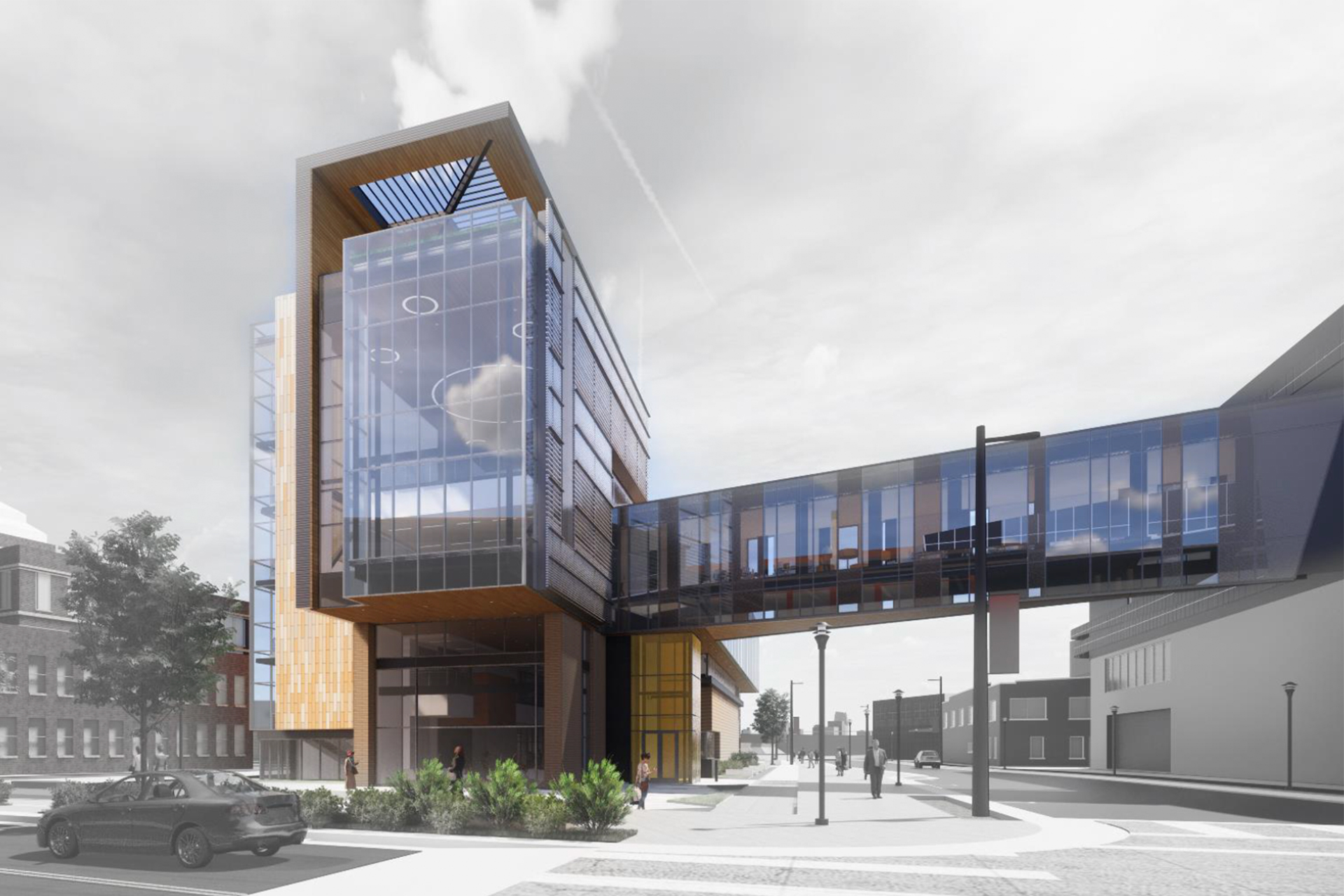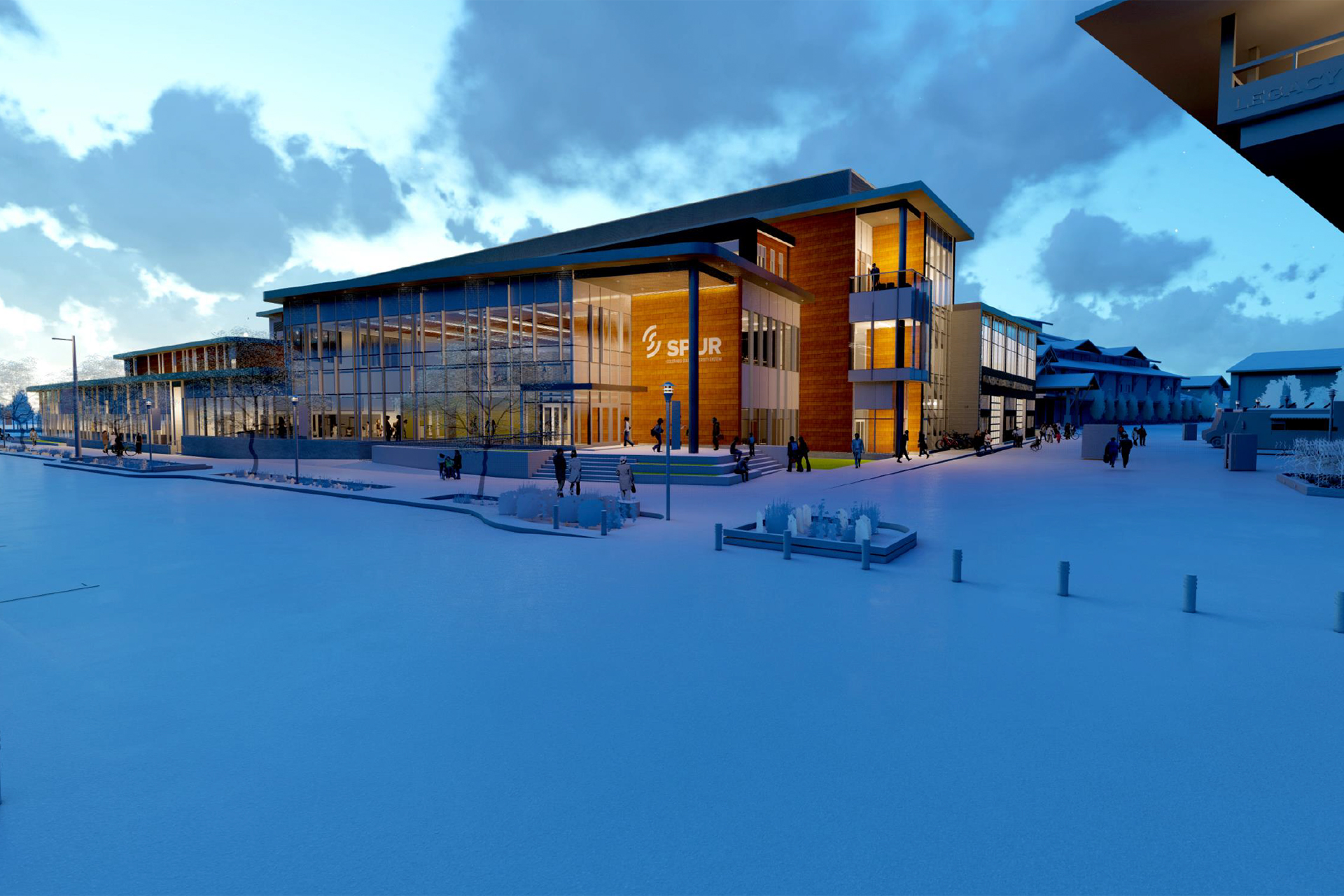Spur moves ahead
New campus spotlights food, water and health story by Tiana Nelson published April 24, 2020Hundreds of people from across metro Denver and Colorado were set to gather April 30 to celebrate the groundbreaking for Spur, the innovative new campus of the Colorado State University System at the National Western Center. Then COVID-19 changed everyone’s plans.
The celebration is delayed, yet the CSU System’s largest building initiative is moving ahead. Construction is starting this month, and Spur is set to open in 2022.
It will be like no other campus in Colorado: three buildings focused on lifelong learning about food, water and health, critical and interconnected topics in the West and around the globe. Spur, in the works for more than six years, will be within the ambitious urban redevelopment of the historic National Western Stock Show complex. The campus will be a vital part of the National Western Center, and its leaders already have launched robust outreach programs in the surrounding communities of north Denver and beyond.
The current pandemic is a stark reminder of the pressing need for collaborative research, education, and public outreach on topics that will be front and center at Spur, according to Tony Frank, chancellor of the CSU System.
“This crisis puts many things in perspective and heightens the importance of the Spur campus,” Frank said. “Spur is all about fostering joint research, providing free public access to education about issues that impact every facet of our lives, and encouraging deeper awareness and understanding of how food, water and health connect people and communities worldwide. If anything, this dire situation has reinforced our conviction that these issues are more important and more interconnected than ever before.”
National Western coalition

A rendering of the CSU Center for Food and Agriculture. Courtesy of CAA ICON
The CSU System is part of a core coalition whose involvement in the National Western Center will bring new, year-round educational and entertainment programming to the storied grounds of the National Western Stock Show near the intersection of Interstates 70 and 25 in northeast Denver. The alliance also is enabling dramatically upgraded Stock Show facilities and is maintaining the state’s best-known symbol of agricultural and Western heritage on the site where it all began in 1906.
Why is that important? The National Western Stock Show annually attracts more than 700,000 people during its 16 days, its leaders report. It tallies a yearly economic impact of some $120 million. And, each year, it raises $500,000 for the National Western Scholarship Trust, which distributes more than 100 scholarships to students – including many CSU students – studying agricultural sciences, rural medicine, and veterinary medicine. In fact, with their missions in education, CSU and the Stock Show have been close partners since their early days.
Other founding partners united to establish the National Western Center are the City and County of Denver, the Denver Museum of Nature & Science, and History Colorado.

A rendering of the CSU Animal Health Complex. Courtesy of CAA ICON
“Spur will bring people together and enhance their understanding of issues that impact us all. There’s a reason the three buildings are organized around themes rather than disciplines – we want young people, in particular, to see you can work on solving problems related to food security or water quality or health, regardless of your background,” said Jocelyn Hittle, senior director of sustainability and Denver programs for the CSU System.
On any given day at Spur, you might find middle-school students collecting water samples along the adjacent South Platte River; the river itself will enjoy continued restoration as part of the National Western Center. Meantime, a partnership with the Dumb Friends League means CSU veterinary students will be trained and local pets will be cared for in a space that allows visiting children to watch and learn. Professionals attending conferences may gather on breaks to sip lattes on an outdoor patio, while researchers work in nearby labs, searching for solutions to global food shortages and other urgent challenges.
Every day, Spur will host families and tourists, K-12 student field trips, conferences and meetings, researchers in state-of-the-art labs, college students pursuing degrees in fields related to agriculture and sustainability, and local artists creating in on-site studios.
Spur’s mission to promote deeper public understanding of high-profile issues is more important than ever, said Tom Vilsack, past U.S. secretary of agriculture and former governor of Iowa. He is an adviser on the Spur project.
“The coronavirus pandemic underscores the importance of understanding connections between food and health. These topics are at the heart of animal health, human health, and a vibrant economy,” Vilsack said. “Spur will grow our appreciation for all those involved in our agricultural and food industry and will help develop sustainable systems that can adapt to challenging disruptions.”
Programming underway

A rendering of the CSU Water Building. Courtesy of CAA ICON
Construction is just beginning, yet Spur programming is well underway and will expand as buildings open, noted Amy Parsons, executive vice chancellor of the CSU System. Advance programming includes the annual Water in the West Symposium; yearly health clinics for pets whose families live nearby; equine-assisted activities and therapies offered through a Denver satellite of CSU’s Temple Grandin Equine Center; and a comprehensive, student-focused partnership with nearby Bruce Randolph School.
“Our team has been building relationships in the surrounding community and across the state, and we’re already offering programming from our three System institutions – our flagship university in Fort Collins, CSU Pueblo, and CSU Global. These programs reflect what will become part of the daily fabric of Spur,” Parsons said.
CAA ICON, an international project management firm based in Denver, is overseeing design and construction. The firm quickly responded to the COVID-19 pandemic to make sure workers are protected on the site, said Dan Loosbrock, vice president of CAA ICON. “The health and safety of the project team, workforce, and community are always the top priority,” he added.
Christie Vilsack, a lifelong educator and educational adviser for Spur, said the pandemic is a vivid reminder that “education works best when it is fluid and responsive.” She has traveled Colorado gathering ideas from community leaders, teachers, and CSU Extension officers to help shape Spur offerings.
With those recommendations, Vilsack envisions a Spur educational plan that, among other elements, highlights water issues illustrated by the South Platte River; connects students to job opportunities now and in the future; and helps engage K-12 students in districts with four-day school weeks.
“We want to provide a means for students and teachers to connect to each other to talk about issues around water, food and health,” Vilsack said. “COVID-19 has made it not just a big idea for the future, but a necessary goal for right now.”